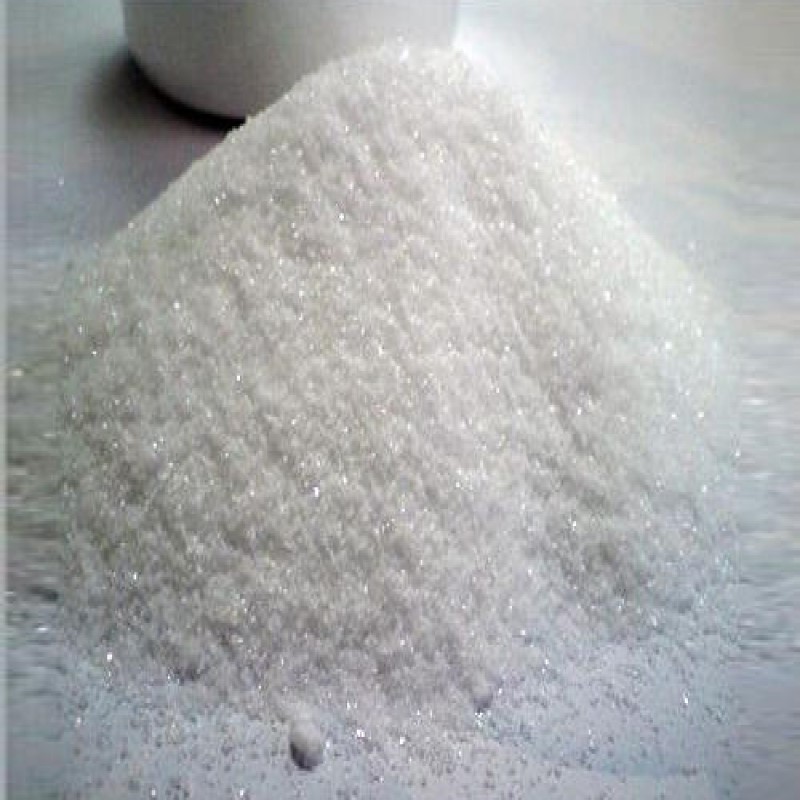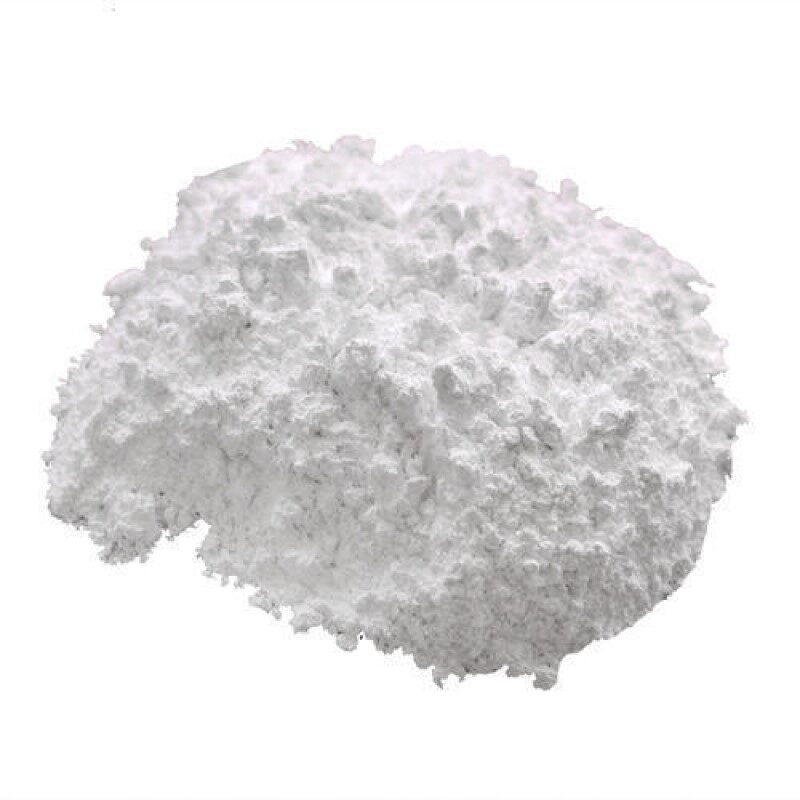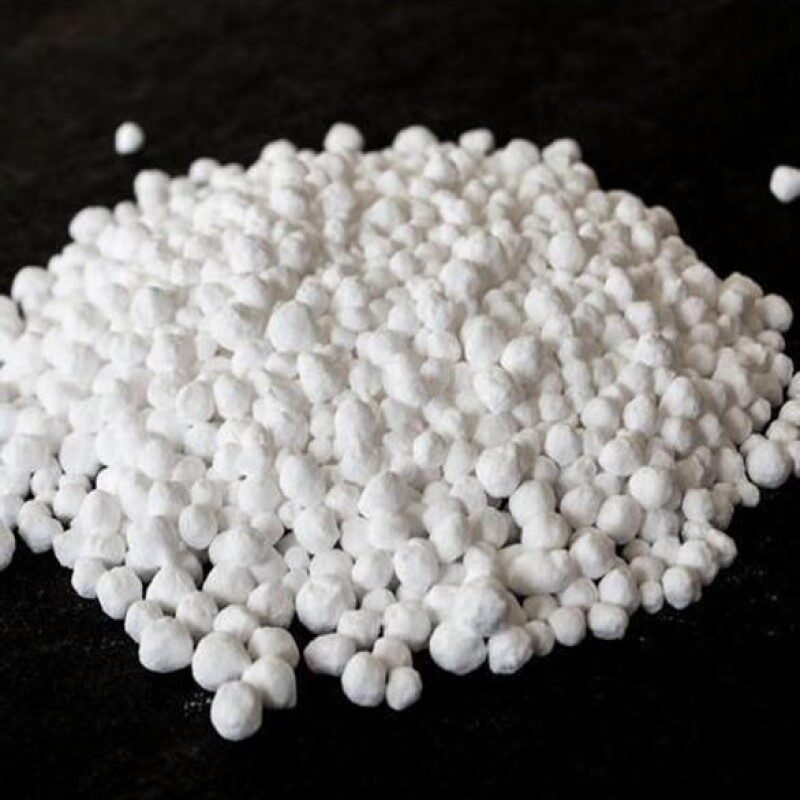Description
Remarks: The material complies as per above specification.
Uses: Ammonium oxalate is used as an analytical reagent and general reducing agent. It and other oxalates are used as anticoagulants, to preserve blood outside the body.
Packing: 25 kg HDPE Bags/HDPE Drum.
For AMIZARA SPECILITY CHEMICALS LLP
Ammonium Oxalate FAQs
1. What is the purpose of Ammonium Oxalate?
Ammonium Oxalate is commonly used as a reducing agent, cleaning agent, and complexing agent in various chemical processes. It finds applications in photography, textile printing, and analytical chemistry.
2. Is Ammonium Oxalate toxic?
Yes, Ammonium Oxalate can be toxic if ingested or inhaled in large quantities. It is important to handle it with care and follow proper safety precautions when working with this chemical.
3. Can Ammonium Oxalate be used in food or beverages?
No, Ammonium Oxalate should not be used in food or beverages. It is primarily an industrial chemical and not intended for consumption.
4. Where can I purchase Ammonium Oxalate?
Ammonium Oxalate is available for purchase from chemical suppliers and online chemical marketplaces Ensure that you are purchasing from Amizara Speciality Chemicals LLP a reputable source and follow all safety guidelines when handling this compound.
5. How should ammonium oxalate be stored?
Ammonium Oxalate should be stored in a tightly sealed container in a cool, dry place away from incompatible substances. It is advisable to store it in a designated area with proper ventilation and suitable chemical storage practices.
MSDS
Ammonium Oxalate Material Safety Data Sheet
SECTION 1: Identification of the substance/mixture and of the company/undertaking 1.1 Product identifiers
| Product Name: |
Ammonium Oxalate |
| CAS-No. |
6009-70-7 |
1.2 Relevant identified uses of the substance or mixture and uses advised against
| Identified uses: |
Laboratory chemicals, Industrial & for professional use only. |
Details of the supplier of the safety data sheet
| Company: |
Amizara Speciality Chemicals LLP
A-301 Borivali Arunodaya Chs Ltd,
Market lane, Above Khatav Hospital,
Borivali (West) Mumbai-400092 |
| E-mail : |
sales@amizaraspecialitychemicals.co.in |
| Telephone : |
022-67251313 |
SECTION 2: Hazards identification
2.1 Classification of the substance or mixture
Classification according to Regulation (EC) No 1272/2008
Acute toxicity, Oral (Category 4), H302 Acute toxicity, Dermal (Category 4), H312
For the full text of the H-Statements mentioned in this Section, see Section 16.
2.2 Label elements
Labelling according Regulation (EC) No 1272/2008
| Signal word |
Warning |
| Hazard statement(s) |
|
| H302 + H312 |
Harmful if swallowed or in contact with skin |
| Precautionary statement(s) |
|
| P301 + P312 + P330 |
IF SW ALLOW ED: Call a POISON CENTER or doctor/ physician if you feel unwell. Rinse mouth. |
| P302 + P352 + P312 |
IF ON SKIN: Wash with plenty of water. Call a POISON CENTER or doctor/ physician if you feel unwell. |
| Supplemental Hazard Statements |
none |
2.3 Other hazards
This substance/mixture contains no components considered to be either persistent, bio-accumulative and toxic (PBT), or very persistent and very bio-accumulative (vPvB) at levels of 0.1% or higher.
SECTION 3: Composition/information on ingredients
3.1 Substances
| Formula : |
C2H8N2O4 · H2O |
| Molecular weight : |
142,11 g/mol |
| CAS-No : |
6009-70-7 |
Hazardous ingredients according to Regulation (EC) No 1272/2008
Component Classification Concentration
Oxalic acid, ammonium salt monohydrate
CAS-No. 6009-70-7 Acute Tox. 4; H302, H312 <= 100 %
For the full text of the H-Statements mentioned in this Section, see Section 16.
SECTION 4: First aid measures
4.1 Description of first aid measures
| General advice |
Consult a physician. Show this safety data sheet to the doctor in attendance. |
| If inhaled |
If breathed in, move person into fresh air. If not breathing, give artificial respiration. Consult a physician. |
| In case of skin contact |
Wash off with soap and plenty of water. Consult a physician. |
| In case of eye contact |
Flush eyes with water as a precaution. |
| If swallowed |
Never give anything by mouth to an unconscious person. Rinse mouth with water. Consult a physician. |
4.2 Most important symptoms and effects, both acute and delayed
The most important known symptoms and effects are described in the labelling (see section 2.2) and/or in section 11
4.3 Indication of any immediate medical attention and special treatment needed
No data available
SECTION 5: Firefighting measures
5.1 Extinguishing media
Suitable extinguishing media
Use water spray, alcohol-resistant foam, dry chemical or carbon dioxide.
5.2 Special hazards arising from the substance or mixture
Carbon oxides, Nitrogen oxides (NOx)
5.3 Advice for firefighters
Wear self-contained breathing apparatus for firefighting if necessary.
5.4 Further information
No data available
SECTION 6: Accidental release measures
6.1 Personal precautions, protective equipment and emergency procedures
Use personal protective equipment. Avoid dust formation. Avoid breathing vapours, mist or gas. Ensure adequate ventilation. Avoid breathing dust.
For personal protection see section 8.
6.2 Environmental precautions
Do not let product enter drains.
6.3 Methods and materials for containment and cleaning up
Pick up and arrange disposal without creating dust. Sweep up and shovel. Keep in suitable, closed containers for disposal.
6.4 Reference to other sections
For disposal see section 13.
SECTION 7: Handling and storage
7.1 Precautions for safe handling
Avoid contact with skin and eyes. Avoid formation of dust and aerosols. Provide appropriate exhaust ventilation at places where dust is formed. For precautions see section 2.2.
7.2 Conditions for safe storage, including any incompatibilities
Store in cool place. Keep container tightly closed in a dry and well-ventilated place.
Moisture sensitive.
Storage class (TRGS 510): Non Combustible Solids
7.3 Specific end use(s)
Apart from the uses mentioned in section 1.2 no other specific uses are stipulated
SECTION 8: Exposure controls/personal protection
8.1 Control parameters
Components with workplace control parameters
8.2 Exposure controls
Appropriate engineering controls
Handle in accordance with good industrial hygiene and safety practice. Wash hands before breaks and at the end of workday.
Personal protective equipment
Eye/face protection
Safety glasses with side-shields conforming to EN166 Use equipment for eye protection tested and approved under appropriate government standards such as NIOSH (US) or EN 166(EU).
Skin protection
Handle with gloves. Gloves must be inspected prior to use. Use proper glove removal technique (without touching glove’s outer surface) to avoid skin contact with this product. Dispose of contaminated gloves after use in accordance with applicable laws and good laboratory practices. Wash and dry hands.
Body Protection
Complete suit protecting against chemicals, The type of protective equipment must be selected according to the concentration and amount of the dangerous substance at the specific workplace.
Respiratory protection
For nuisance exposures use type P95 (US) or type P1 (EU EN 143) particle respirator.For higher level protection use type OV/AG/P99 (US) or type ABEK-P2 (EU EN 143) respirator cartridges. Use respirators and components tested and approved under appropriate government standards such as NIOSH (US) or CEN (EU).
Control of environmental exposure
Do not let product enter drains.
SECTION 9: Physical and chemical properties
9.1 Information on basic physical and chemical properties
| Test |
Specification |
| Characters |
White Crystalline Powder. |
| Solubility |
Soluble in 20 parts of water, Insoluble in alcohol |
| Insoluble Matter |
0.005% |
| Chloride |
Maximum 0.02% |
| Nitrate |
0.005% |
| Sulphate |
Maximum 0.003% |
| Iron |
0.001% |
| Heavy Metal |
0.005% |
| Copper |
Maximum 0.001% |
| Assay |
Not less than 98.00% |
9.2 Other safety information
No data available
SECTION 10: Stability and reactivity
10.1 Reactivity
No data available
10.2 Chemical stability
Stable under recommended storage conditions.
10.3 Possibility of hazardous reactions
No data available
10.4 Conditions to avoid
No data available
10.5 Incompatible materials
Strong oxidizing agents, Strong acids
10.6 Hazardous decomposition products
Other decomposition products – No data available In the event of fire: see section 5
SECTION 11: Toxicological information
11.1 Information on toxicological effects
Acute toxicity
No data available
Skin corrosion/irritation
Skin – Rabbit
Result: No skin irritation (OECD Test Guideline 404)
Remarks: Read-across (Analogy)
Serious eye damage/eye irritation
Mild eye irritation
Respiratory or skin sensitisation
No data available
Germ cell mutagenicity
No data available
Carcinogenicity
IARC: No component of this product present at levels greater than or equal to 0.1% is identified as probable, possible or confirmed human carcinogen by IARC.
Reproductive toxicity
No data available
Specific target organ toxicity – single exposure
No data available
Specific target organ toxicity – repeated exposure
No data available
Aspiration hazard
No data available
Additional Information
RTECS: Not available
Cough, Shortness of breath, Headache, Nausea, Vomiting
SECTION 12: Ecological information
12.1 Toxicity
No data available
12.2 Persistence and degradability
No data available
12.3 Bio-accumulative potential
No data available
12.4 Mobility in soil
No data available
12.5 Results of PBT and vPvB assessment
This substance/mixture contains no components considered to be either persistent, bio-accumulative and toxic (PBT), or very persistent and very bio-accumulative (vPvB) at levels of 0.1% or higher.
12.6 Other adverse effects
No data available
SECTION 13: Disposal considerations
13.1 Waste treatment methods
Product
Offer surplus and non-recyclable solutions to a licensed disposal company. Dissolve or mix the material with a combustible solvent and burn in a chemical incinerator equipped with an afterburner and scrubber.
Contaminated packaging
Dispose of as unused product.
SECTION 14: Transport information
14.1 UN number
14.2 UN proper shipping name
| ADR/RID: |
Not dangerous goods |
| IMDG: |
Not dangerous goods |
| IATA: |
Not dangerous goods |
14.3 Transport hazard class(es)
14.4 Packaging group
14.5 Environmental hazards
| ADR/RID: |
No |
| IMDG: |
No |
| IATA: |
No |
14.6Special precautions for user
No data available
SECTION 15: Regulatory information
This safety datasheet complies with the requirements of Regulation (EC) No. 453/2010.
15.1 Safety, health and environmental regulations/legislation specific for the substance or mixture
15.2 Chemical Safety Assessment
For this product a chemical safety assessment was not carried out
SECTION 16: Other informationFull text of H-Statements referred to under sections 2 and 3.
H302 Harmful if swallowed.
H302 + H312 Harmful if swallowed or in contact with skin
H312 Harmful in contact with skin.
Further information The above information is believed to be correct but does not purport to be all inclusive and shall be used only as a guide. The information in this document is based on the present state of our knowledge and is applicable to the product with regard to appropriate safety precautions. It does not represent any guarantee of the properties of the product. Amizara Speciality Chemicals LLP and its Affiliates shall not be held liable for any damage resulting from handling or from contact with the above product. For further information please contact sales@amizaraspecialitychemicals.co.in




